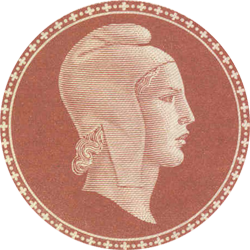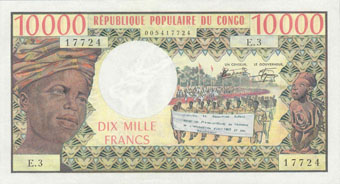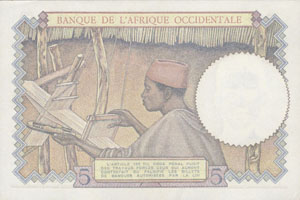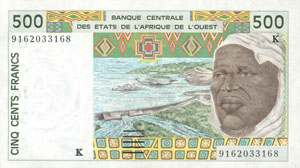Introduction pour la Collectionneur des Billets

Collecting money. It always seems like some sort of paradox to pay money for other money, often money that can't be spent. But many of us do it, and it makes for a wonderful hobby. Whether you see banknotes as pieces of art, a part of history, or as financial instruments, there is plenty to keep you busy (and virtually bankrupt) for a long time.
This article is a summary of the key questions a new collector may have regarding the hobby.
What to Collect?
You can collect whatever you want, but there are certainly some common types of collections I'll describe below. But there are no rules, no winners, and usually no "complete" collections, so if you have other ideas feel free to go at it! I've seen "one of each country" collections, collections of only $2 (or £2 or 2F) notes, collections around a specific artist or engraver, and plenty of other groupings that were great ways to create a unique collection.
No matter what type of collection you make, my most important advice is to choose something that has personal significance to you. Do not collect what everyone else collects. Look to your background, your other interests, countries you may have traveled - that is where your collection should begin.
The Entire World
In theory, this would be a cool collection, and to the novice it may somehow feel like a reachable goal. You can easily find "100 notes for $100" advertisements showing large piles of "banknotes from exotic lands" to start filling up binders. Many of us may start out this direction, but most quickly realize it's completely impractical. Perhaps a "One from Each Country" (OFEC) collection is more attainable, though even that is a challenging project. The longer term "entire world" collector may end up with a collection of world notes that are appealing to him at the time of purchase, but I recommend staying away from those bulk lots of cheap notes.
Country Collection
Many folks will collect notes from a particular country, often their country of origin. A country collection is typically quite a challenge to complete, as there will likely be some notes that are relatively inexpensive (often the more recent issues), and many that will be quite rare and expensive.
Type Sets




A term more commonly used in coin collecting, the term "type" refers to the major design types and denominations, and a type set would contain one example of each unique type. Details such as signature varieties, later issues with only a date change, or other minor design changes are not necessarily included in such a collection. Type set collecting is particularly enjoyable, because it allows the collector to select particular types of interest, and ignore those that aren't interesting. A type set is also one of the few collections that you can complete!
Topical Collection











A topical collection can be one of the most interesting and personal. Pick a theme that's of interest to you, and start collecting! You will find yourself spending time rifling through catalogs of every country in the world, examining the details of banknotes to see if there is some reference to your topic, and it's like finding a gold nugget when you to spot an item that fits. The topic of course could be anything, from WWII emergency notes, to "birds on banknotes" to notes designed by a particular artist. Depending on the topic you chose, the notes might be be more recent and less expensive, making this a not only a bright colorful collection, but one that's easier on the budget than most others.
Serial Numbers and Replacement Notes
Some collectors, particularly those of US notes, will build a collection of unusual serial numbers. These can be low numbers (00000001 being quite nice), interesting patterns (12344321) or other numerical patterns. There aren't catalogs of these, so you need to watch prices of sold items to get an idea of values. Replacement notes, intended to "replace" notes that are pulled out of sequence in the printing process during Q/A, are generally tagged with specificy sybols in the serial or block numbers (a star in the USA, "W" block number in France, or "Z" block many other countries)
Errors, Specimens, Proofs and other Collateral
As you spend time in the hobby, you will run into material outside the regularly issued banknotes that come from the bank. This may include printing or cutting errors ("production errors"), it might be specimen or proof copies generated during the print process, but not intended for circulation. All this material is fun to add to your collection and is often unusual and rare to see.
Specialization













A specialized collection is the source for academic research, and is the most detailed, fruitless and expensive way to collect. If you're the type who must have every variety, every printing error, ever district, every date and signature variety, this is for you. If you have that perfectionist's requirement for completeness, this is for you. But it's a never-ending battle and you must enjoy the hunt as much as the kill if you want satisfaction with a specialized collection. If you're going to head down this path, I recommend choosing a single note to start with, and determining in advance all the known varieties and estimated costs. It could be an enlightening piece of research.
Where to get Banknotes?
Firstly, I recommend not spending a lot of money until you really know what you want to collect, and have an idea of the budget needed for such a collection. Sure, get one of those "100 notes for $25" deals and have some fun, but use it to focus your collecting interests.
There are many sources for banknotes.
- Circulation: Certainly if you're collecting modern notes from your own country, a cheap way to pick them up is by watching the money that travels through your wallet.
- Banks: Your bank may be willing to get you packs of notes, often new from the central bank, that you can search for interesting serial numbers, errors, replacement notes, etc.
- Dealers: Always available to help, there are local dealers with stores, and on-line dealers of banknotes that will help you build your collection. Most dealers are happy to send you lists of their stock, or have web sites with lists.
- Other Collectors: Typically online via social networks, you may fund other collectors interested in trading banknotes. This is usually not the way to get high-end expensive notes, but is quite fun for a "one note from each country" type of collection.
- eBay & Delcampe: Love them or hate them, these sites have an enormous number of banknotes for sale. Use appropriate caution and you should be able to find some nice items.
- Auction Houses: For higher end banknotes, auction houses are aften where you'll need to go.
With any sight-unseen purchase, be wary of grading and doctoring especially if you're unfamiliar with the seller. You should critically view high resolution scans of both sides of a banknote, understanding that scans can easily hide faults. Ask questions, and don't purchase if you feel the seller is avoiding details.
Grading
Grading is the process of assigning a name to the condition or quality of a banknote. It is
unfortunately a subjective exercise, but it's critical that you learn to grade your banknotes because as
with any collectible, "quality is everything".

A banknote might be worth 50 cents in poor condition, and $100 in uncirculated condition - you need to know which you have, or what you're paying for.
In addition, there are different grading standards used by third party graders (TPG's, companies in the business of grading banknotes), versus the standard recognized by the International Bank Note Society. The standard used in most countries is the one defined by the IBNS. Notes are graded from Poor through Uncirculated, with examples and descriptions of each grade. On the other hand, most TPG's grade on a numeric scale based on the Sheldon Scale defined in the 1950's for grading coins. This scale assigns a number (1 to 70) as well as term such Gem Uncirculated, Choice Extremely Fine, etc. Here is PMG's grading scale description. TPG's have caught on largely in the USA, but for material outside the USA, TPG's are typically not used to grade notes. While both methods use terms like "Uncirculated, About Uncirculated, Extremely Fine, etcetera, one should not make the mistake of assuming the definitions of those terms are the same across grading standards; they are not.
Valuation
Banknote values are constantly changing, as they are quite a popular collectable. As such, your valuation is tricky and reliance on printed catalogs is a chancy move. Of course quality is everything, and it would not be surprising to find a note that has a value of $100 in uncirculated condition, but only fifty cents if it is well used. Actual prices of previous sales are your best answer for pricing, so tracking prices realized at auctions, or eBay actual sales prices are good ways to watch the market.
Investment
Is collecting the same as investing? Clearly not, but collectors tend to confuse the two all the time. A collector will find an area of interest, and then "filling the spaces" often takes over, leaving priority on quantity over quality. The net result is a large collection with lots of interesting banknotes; a perfectly good collection for fun or research, but is it an investment? Will it sell for a premium?
Alternatively, how would one invest in banknotes, with the goal of increasing value? A few general thoughts come to mind:
- Rarity is critical. No matter the quality, a note that can be found every day on eBay is not something that will demand a strong price when you decide to sell your copy.
- Condition is critical. A note that has problems is not a note that draws a premium price.
- Eye appeal is important. Some notes just have that magic, and you know it when you see it. Don't overlook color registration, margins, embossing, and paper color in favor of simply finding an UNC copy of a note.
- Demand is fluid, and and investor should recognize that what's hot today might not be what's hot tomorrow.
- Timing the sale is just as important as timing the buy. An investor should not fall in love with his collection and miss a golden opportunity to sell.
I have not put "cost" on the above list, as I feel it is the lowest priority for investment-grade notes. A rare note in good condition, with good eye appeal, in a collecting area which is in demand, will be a fantastic note, and will have virtually no previous sales to compare to. The price of this note will be well in excesss of the catalog value, but can be virtually guaranteed to be a good investment - as long as you are willing to sell it!
Storage
Once you start paying real money for banknotes, it's a good idea to keep them safe from further
damage.

Graded notes will already be in a holder, but for ungraded ("raw") notes, this means finding note sleeves that are of archival quality. I will refrain from repeating, and simply refer you to Clay Irving's detailed information on the right and wrong types of material that should be in your note sleeves. Typically, once you have your notes in these sleeves, you would put them in clear binder pages made to hold three notes (or less, depending on their size) per page, which can go on your shelf or to the safe deposit box.
Once you've put the note in a sleeve, there is no reason to remove it. You can scan notes, pass them around to friends and they will be protected against normal handling issues.
Cleaning and Repairs
As with most collectibles, original untouched banknotes are desired by collectors, and fixing flaws such as tears or holes, washing dirt off a note, pressing a note flat, or otherwise "doctoring" a note is considered fraudulent unless clearly stated by a seller. Even "photoshopping" a note for sale online has become a popular practice and is unethical in this collector's view.
Recognizing such doctoring is sometimes difficult, but knowledge of what the note looked like when originally printed, and a common sense expectation of wear on a banknote over time will always help. For example we know that intaglio printing will leave embossed areas where the paper was pressed into the plate at high pressure. A completely flat copy of such a note should raise suspicion. We know that "French" notes that were printed on damp paper should be wavy and not perfectly flat. A note that shows its age via folds should not logically have perfectly white clean paper. If a note smells of chemicals, it could well have been cleaned. A note viewed at an angle against the light will often show flattened folds or repairs, as will a note held under a black (ultraviolet) light.
Doctoring a note will have huge impact on its value, and while you might purchase such a note, a large discount should be obtained to make it worth your while.